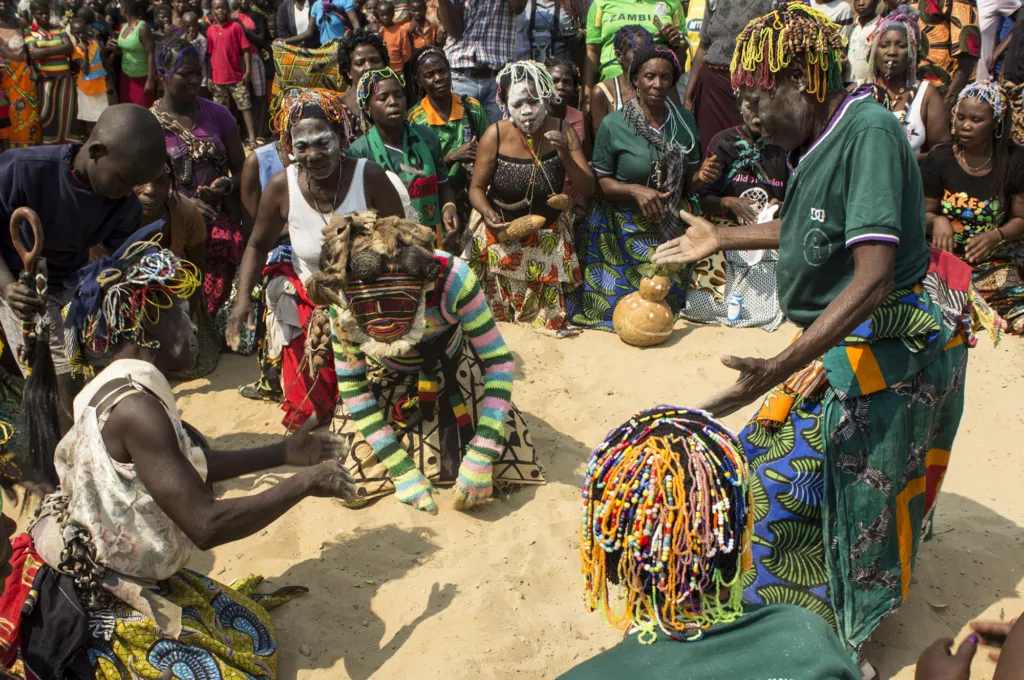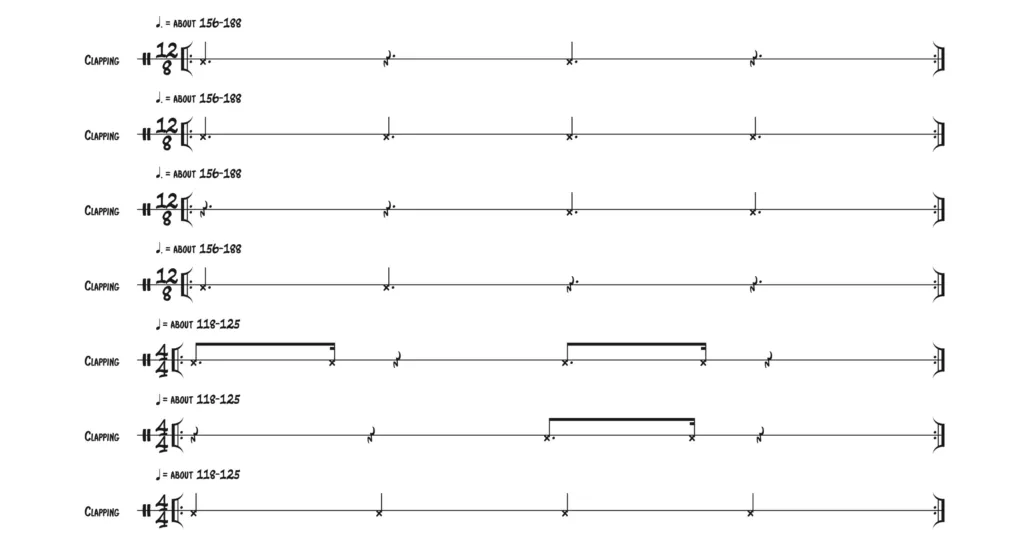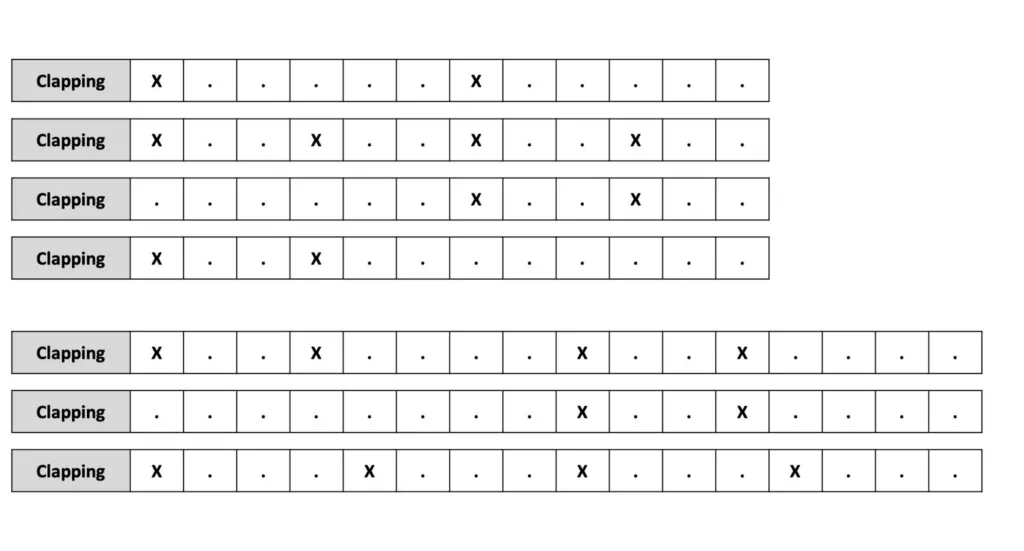Myaso Yakusangala
for higher quality audio, check upcoming ILAM PROJECT; for higher quality video, download from “Videos of Luvale (and Related) Sonic Culture” link
Origin: Luvale
Many makishi emerge throughout the various stages of the mukanda (traditional male initiation school) process. The ever-important Chizaluke is the last to kuvumbuka (emerge) and does not do so until the final phase: the elaborate, multi-day graduation ceremony. In Zambian Luvale communities, it is said that Chizaluke emerges from ancestral lands in Angola. His appearance at a mukanda is believed to be the last leg of a long journey to unite with his living descendants. Women – oftentimes vanyatundanji (mothers of boy initiates) – escort Chizaluke as he first approaches the village hosting the mukanda. As the women escort him, they periodically pause to sing myaso yakusangala (songs of joyful praise). When Chizaluke hears this music, he pauses his majestic walk to dance. Although women are forbidden from knowing the secrets of makishi performance and must keep a distance from certain spirits, they are vital to this type of spirit manifestation (Gluckman 1974).1
Performed to the sole accompaniment of women’s clapping, each song in this category has one or more clapping patterns, drawn from a pool of them shared by many songs. Numerous myaso yakusangala end with Chizaluke leading the women to the ground where they chant as they smack the floor. Other songs end with call-and-response games. The entire interaction – from when the women first meet Chizaluke to when he finally arrives at the village – is joyous, celebratory, and playful.
One Chizaluke will emerge for every kandanji (boy initiate) in the mukanda (Jordán 2006, 48).2 Each Chizaluke will usually emerge on its own day. There are thus often several days of myaso yakusangala. It may take a Chizaluke several hours to move from the meeting point to the village, so there is ample time to perform many myaso yakusangala during this phase of mukanda. Some myaso yakusangala can also be sung when Chizaluke dances Mungongi or Fwifwi in a chilende. This is because certain songs are heavily associated with this likishi. However, these items of repertoire should not be confused.
- Gluckman, Max. 1974. “The Philosophical Roots of Masked Dancers in Barotseland (Western Province), Zambia.” In In Memoriam António Jorge Dias, 139–57. Lisboa: Instituto de Alta Cultura. ↩︎
- Jordán, Manuel. 2006. Makishi: Mask Characters of Zambia. Fowler in Focus. Los Angeles: University of California. ↩︎



